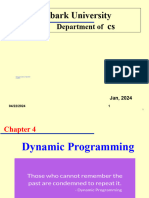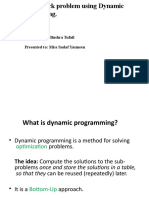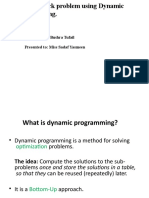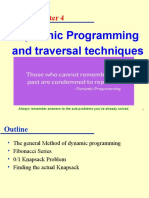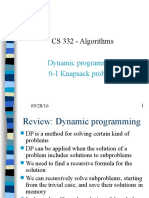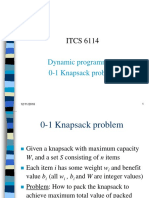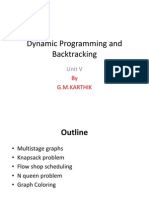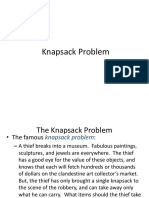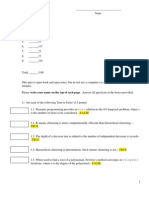0% found this document useful (0 votes)
9 views40 pagesLec6 - Design and Analysis of Algorithms
Dynamic programming (DP) is an algorithm design technique that solves problems by combining solutions to overlapping subproblems, often used in optimization tasks. The process involves characterizing the optimal solution structure, defining it recursively, computing values in a bottom-up manner, and constructing the solution from these values. An example of DP is the 0-1 Knapsack problem, where the goal is to maximize the total value of items packed within a given weight limit.
Uploaded by
afra awedCopyright
© © All Rights Reserved
We take content rights seriously. If you suspect this is your content, claim it here.
Available Formats
Download as PPTX, PDF, TXT or read online on Scribd
0% found this document useful (0 votes)
9 views40 pagesLec6 - Design and Analysis of Algorithms
Dynamic programming (DP) is an algorithm design technique that solves problems by combining solutions to overlapping subproblems, often used in optimization tasks. The process involves characterizing the optimal solution structure, defining it recursively, computing values in a bottom-up manner, and constructing the solution from these values. An example of DP is the 0-1 Knapsack problem, where the goal is to maximize the total value of items packed within a given weight limit.
Uploaded by
afra awedCopyright
© © All Rights Reserved
We take content rights seriously. If you suspect this is your content, claim it here.
Available Formats
Download as PPTX, PDF, TXT or read online on Scribd
/ 40


